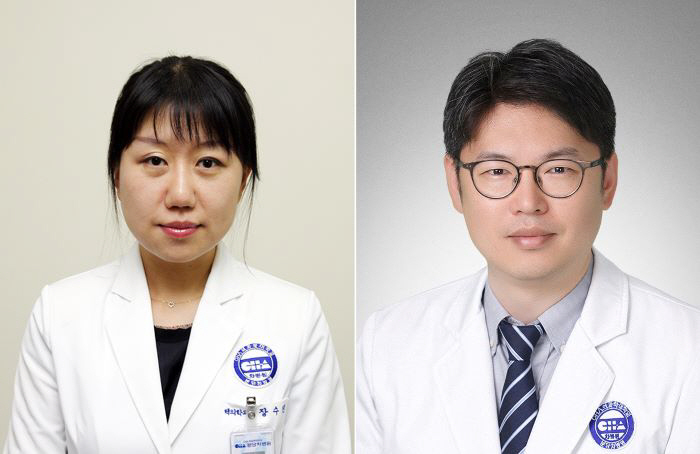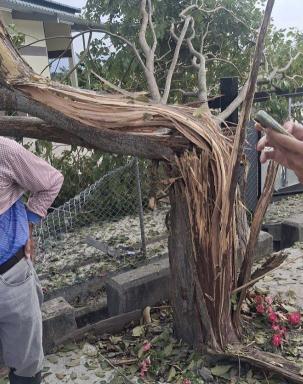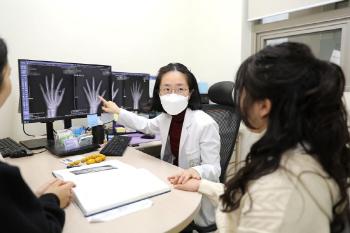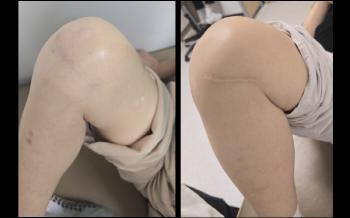A New Method for Predicting Hepatocellular Cancer Treatment is Coming...A Biomarker Based on Positron Emission Tomography
Professor Jang Soo-jin of the Department of Nuclear Medicine at Cha Medical University (Director Yoon Sang-wook) and Professor Jeon Hong-jae of Hematologic Oncology Department research team led by Professor Lee Jung-won and Professor Lee Sang-mi of the Department of Nuclear Medicine at Cheonan Hospital affiliated with Soonchunhyang University and a new imaging team that can predict the treatment response and survival prognosis with FDG PET-CT (positron emission tomography) before hepatocellular cancer treatment. The study was published in the latest issue of the international journal Clinical Nuclear Medicine.
Although atezolizumab and bevacizumab combination therapy are widely used as treatments to prolong survival in patients with unresectable advanced hepatocellular carcinoma, the need for predictive indicators of treatment response by patient has been steadily raised as the objective response rate is only about 30%.
In response, the research team analyzed the association between FDG PET-CT parameters (parameters) and survival outcomes in 78 patients with hepatocellular carcinoma who received atetzolizumab and bevacizumab combination therapy at Bundang Cha Hospital from July 2020 to June 2023.
Positron emission tomography (FDG PET-CT) is a test that uses a radioactive glucose analog called Fluorodeoxyglucose (FDG) to image cell metabolism inside the human body and finds cancer cells, inflammation, and metabolic abnormalities in the body.
The research team evaluated the relationship between treatment response and survival period by quantifying the maximum standardized intake factor (SUVmax), tumor-to-normal Liver Uptake Ratio (TLR), metabolic tumor volume (MTV), and total lesion metabolism (TLG) in FDG PET/CT images. As a result, the patient group with high TLG levels before treatment showed shorter progression-free survival (PFS) and overall survival (OS) than the patient group with low TLG levels. In particular, the 1-year progression-free survival rate of patients with TLG 171.0g or higher was 23.4% and the overall survival rate was 36.8%, and in the patients with TLG 171.0g or less, the progression-free survival rate was 43.8% and the overall survival rate was 78.0%.
Professor Jang Soo-jin of the Department of Nuclear Medicine at Bundang Cha Hospital confirmed the possibility of predicting the treatment response to atezolizumab and bevacizumab combination therapy by quantitatively analyzing metabolic tumor loads in patients with hepatocellular carcinoma using FDG PET/CT"This study is significant in that it presents new possibilities for the development of biomarkers through PET imaging for early screening of high-risk patients and establishing personalized treatment strategies." "We plan to further verify the results of this study through future prospective studies to contribute to the development of patient-specific treatment strategies," he said.
This study was conducted with basic research support from the Ministry of Science and ICT and the Korea Research Foundation.
Although atezolizumab and bevacizumab combination therapy are widely used as treatments to prolong survival in patients with unresectable advanced hepatocellular carcinoma, the need for predictive indicators of treatment response by patient has been steadily raised as the objective response rate is only about 30%.
In response, the research team analyzed the association between FDG PET-CT parameters (parameters) and survival outcomes in 78 patients with hepatocellular carcinoma who received atetzolizumab and bevacizumab combination therapy at Bundang Cha Hospital from July 2020 to June 2023.
Positron emission tomography (FDG PET-CT) is a test that uses a radioactive glucose analog called Fluorodeoxyglucose (FDG) to image cell metabolism inside the human body and finds cancer cells, inflammation, and metabolic abnormalities in the body.
The research team evaluated the relationship between treatment response and survival period by quantifying the maximum standardized intake factor (SUVmax), tumor-to-normal Liver Uptake Ratio (TLR), metabolic tumor volume (MTV), and total lesion metabolism (TLG) in FDG PET/CT images. As a result, the patient group with high TLG levels before treatment showed shorter progression-free survival (PFS) and overall survival (OS) than the patient group with low TLG levels. In particular, the 1-year progression-free survival rate of patients with TLG 171.0g or higher was 23.4% and the overall survival rate was 36.8%, and in the patients with TLG 171.0g or less, the progression-free survival rate was 43.8% and the overall survival rate was 78.0%.
Professor Jang Soo-jin of the Department of Nuclear Medicine at Bundang Cha Hospital confirmed the possibility of predicting the treatment response to atezolizumab and bevacizumab combination therapy by quantitatively analyzing metabolic tumor loads in patients with hepatocellular carcinoma using FDG PET/CT"This study is significant in that it presents new possibilities for the development of biomarkers through PET imaging for early screening of high-risk patients and establishing personalized treatment strategies." "We plan to further verify the results of this study through future prospective studies to contribute to the development of patient-specific treatment strategies," he said.
This study was conducted with basic research support from the Ministry of Science and ICT and the Korea Research Foundation.
|
This article was translated by Naver AI translator.




